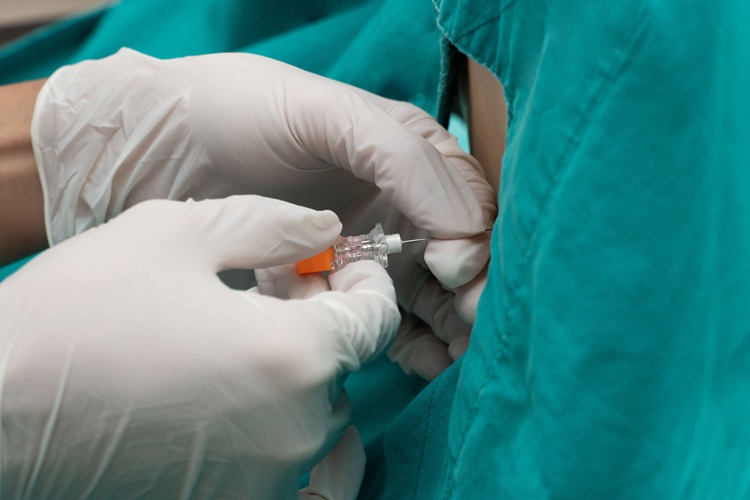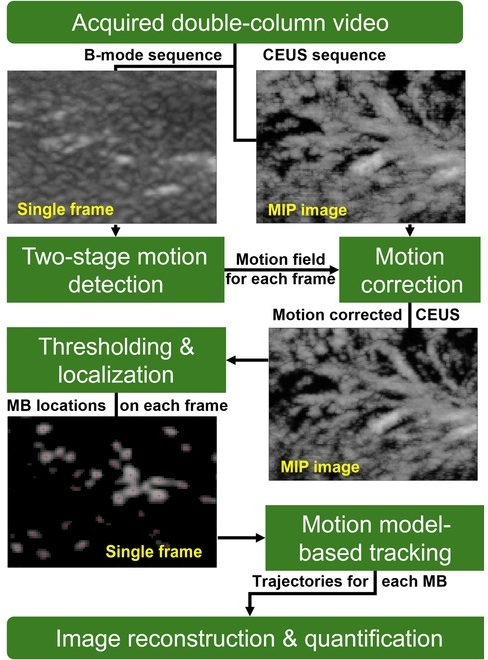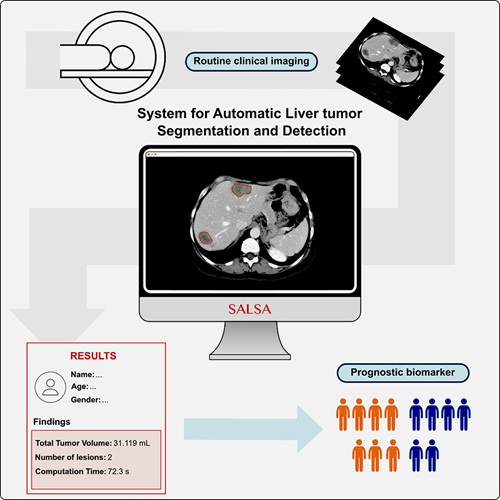Image Analysis Assesses Immune Reaction to Breast Cancer and Improves Treatment
|
By MedImaging International staff writers Posted on 17 Mar 2015 |
A novel test has been developed that can be used to analyze images of “hotspots” where the immune system attacks breast cancer cells.
Scientists used statistical tests to help predict the survival chances of women with breast cancer by assessing the status of their immune system and treated only those in need of intensive treatment. Women with a high number of “hotspots” had a life expectancy of 91 months before their cancer spread while those with fewer hotspots lived 64 months on average.
The scientists analyzed tumor samples from 245 women with estrogen receptor negative (ER negative) breast cancer using computerized imaging and statistical analysis, and measured the number of immune cell hotspots where immune cells were spatially clustered around breast cancer cells. The hotspots were a better indicator of immune response than measuring the number of immune cells in a tumor.
The researchers at the Institute of Cancer Research (London, UK) published details of the test in the February 2015 issue of the journal Modern Pathology.
Team leader in Computational Pathology and Integrative Genomics at the ICR, Dr. Yinyin Yuan, said, “Our research is aiming to develop completely new ways of telling apart more and less aggressive cancers, based on how successful the immune system is in keeping tumors in check. We have shown that to measure the strength of an immune response to a cancer, we need to assess not just how many immune cells there are, but whether these are clustered together into cancer-busting hotspots. By analyzing the complex ways in which the immune system interacts with cancer cells, we can split women with breast cancer into two groups, who might need different types of treatment.”
Definiens (Munich, Germany), which provides image analysis for digital pathology and diagnostics, can discuss what this test means for patients as well as the industry, how this approach is being used in other cancers, challenges with studying the immune system and how they're being addressed, and other advancements expected in immune studies for cancer this year.
Related Links:
The Institute of Cancer Research
Definiens
Scientists used statistical tests to help predict the survival chances of women with breast cancer by assessing the status of their immune system and treated only those in need of intensive treatment. Women with a high number of “hotspots” had a life expectancy of 91 months before their cancer spread while those with fewer hotspots lived 64 months on average.
The scientists analyzed tumor samples from 245 women with estrogen receptor negative (ER negative) breast cancer using computerized imaging and statistical analysis, and measured the number of immune cell hotspots where immune cells were spatially clustered around breast cancer cells. The hotspots were a better indicator of immune response than measuring the number of immune cells in a tumor.
The researchers at the Institute of Cancer Research (London, UK) published details of the test in the February 2015 issue of the journal Modern Pathology.
Team leader in Computational Pathology and Integrative Genomics at the ICR, Dr. Yinyin Yuan, said, “Our research is aiming to develop completely new ways of telling apart more and less aggressive cancers, based on how successful the immune system is in keeping tumors in check. We have shown that to measure the strength of an immune response to a cancer, we need to assess not just how many immune cells there are, but whether these are clustered together into cancer-busting hotspots. By analyzing the complex ways in which the immune system interacts with cancer cells, we can split women with breast cancer into two groups, who might need different types of treatment.”
Definiens (Munich, Germany), which provides image analysis for digital pathology and diagnostics, can discuss what this test means for patients as well as the industry, how this approach is being used in other cancers, challenges with studying the immune system and how they're being addressed, and other advancements expected in immune studies for cancer this year.
Related Links:
The Institute of Cancer Research
Definiens
Latest Imaging IT News
- New Google Cloud Medical Imaging Suite Makes Imaging Healthcare Data More Accessible
- Global AI in Medical Diagnostics Market to Be Driven by Demand for Image Recognition in Radiology
- AI-Based Mammography Triage Software Helps Dramatically Improve Interpretation Process
- Artificial Intelligence (AI) Program Accurately Predicts Lung Cancer Risk from CT Images
- Image Management Platform Streamlines Treatment Plans
- AI-Based Technology for Ultrasound Image Analysis Receives FDA Approval
- AI Technology for Detecting Breast Cancer Receives CE Mark Approval
- Digital Pathology Software Improves Workflow Efficiency
- Patient-Centric Portal Facilitates Direct Imaging Access
- New Workstation Supports Customer-Driven Imaging Workflow
Channels
Radiography
view channel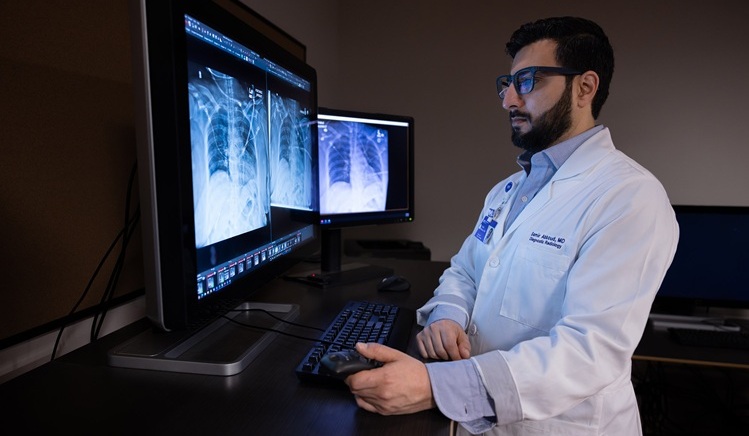
AI Radiology Tool Identifies Life-Threatening Conditions in Milliseconds
Radiology is emerging as one of healthcare’s most pressing bottlenecks. By 2033, the U.S. could face a shortage of up to 42,000 radiologists, even as imaging volumes grow by 5% annually.... Read more
Machine Learning Algorithm Identifies Cardiovascular Risk from Routine Bone Density Scans
A new study published in the Journal of Bone and Mineral Research reveals that an automated machine learning program can predict the risk of cardiovascular events and falls or fractures by analyzing bone... Read more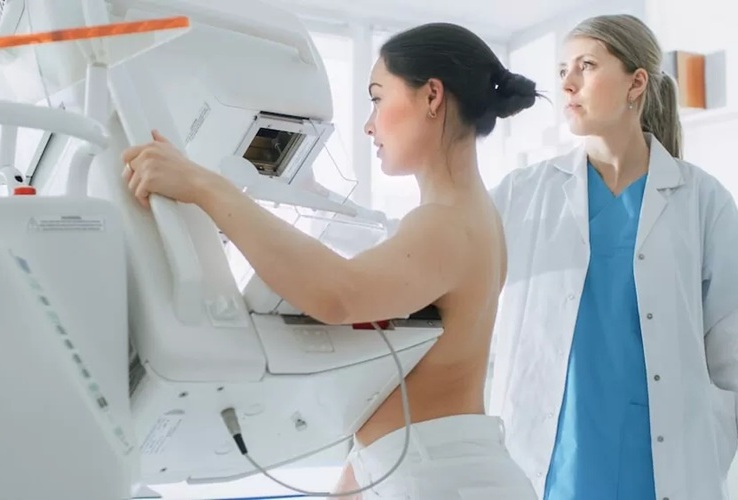
AI Improves Early Detection of Interval Breast Cancers
Interval breast cancers, which occur between routine screenings, are easier to treat when detected earlier. Early detection can reduce the need for aggressive treatments and improve the chances of better outcomes.... Read more
World's Largest Class Single Crystal Diamond Radiation Detector Opens New Possibilities for Diagnostic Imaging
Diamonds possess ideal physical properties for radiation detection, such as exceptional thermal and chemical stability along with a quick response time. Made of carbon with an atomic number of six, diamonds... Read moreMRI
view channel
New MRI Technique Reveals Hidden Heart Issues
Traditional exercise stress tests conducted within an MRI machine require patients to lie flat, a position that artificially improves heart function by increasing stroke volume due to gravity-driven blood... Read more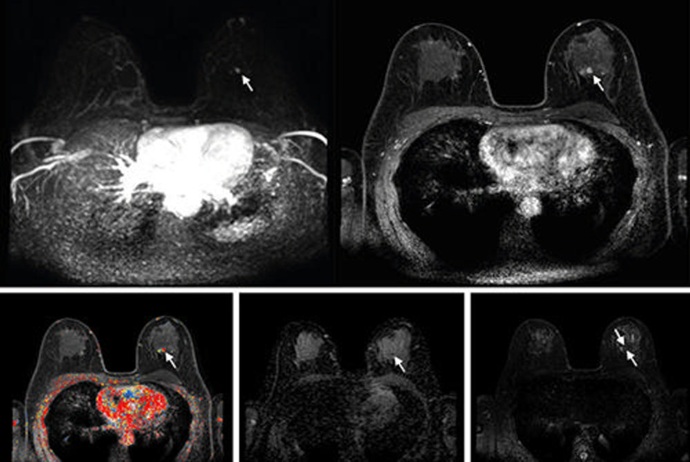
Shorter MRI Exam Effectively Detects Cancer in Dense Breasts
Women with extremely dense breasts face a higher risk of missed breast cancer diagnoses, as dense glandular and fibrous tissue can obscure tumors on mammograms. While breast MRI is recommended for supplemental... Read moreUltrasound
view channel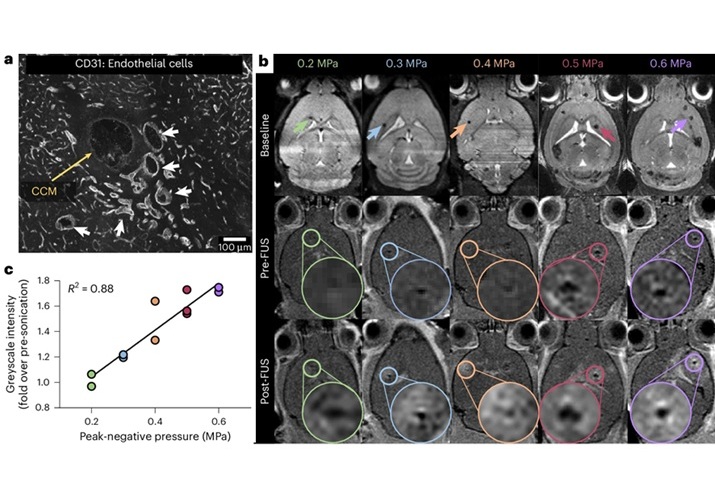
New Incision-Free Technique Halts Growth of Debilitating Brain Lesions
Cerebral cavernous malformations (CCMs), also known as cavernomas, are abnormal clusters of blood vessels that can grow in the brain, spinal cord, or other parts of the body. While most cases remain asymptomatic,... Read more.jpeg)
AI-Powered Lung Ultrasound Outperforms Human Experts in Tuberculosis Diagnosis
Despite global declines in tuberculosis (TB) rates in previous years, the incidence of TB rose by 4.6% from 2020 to 2023. Early screening and rapid diagnosis are essential elements of the World Health... Read moreNuclear Medicine
view channel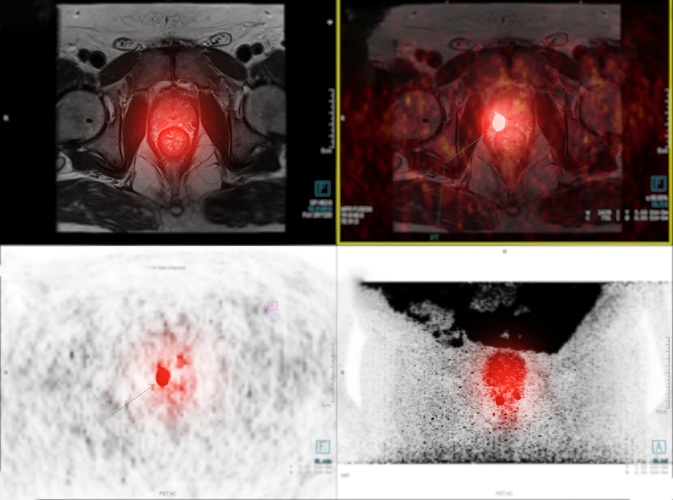
New Imaging Approach Could Reduce Need for Biopsies to Monitor Prostate Cancer
Prostate cancer is the second leading cause of cancer-related death among men in the United States. However, the majority of older men diagnosed with prostate cancer have slow-growing, low-risk forms of... Read more
Novel Radiolabeled Antibody Improves Diagnosis and Treatment of Solid Tumors
Interleukin-13 receptor α-2 (IL13Rα2) is a cell surface receptor commonly found in solid tumors such as glioblastoma, melanoma, and breast cancer. It is minimally expressed in normal tissues, making it... Read moreGeneral/Advanced Imaging
view channel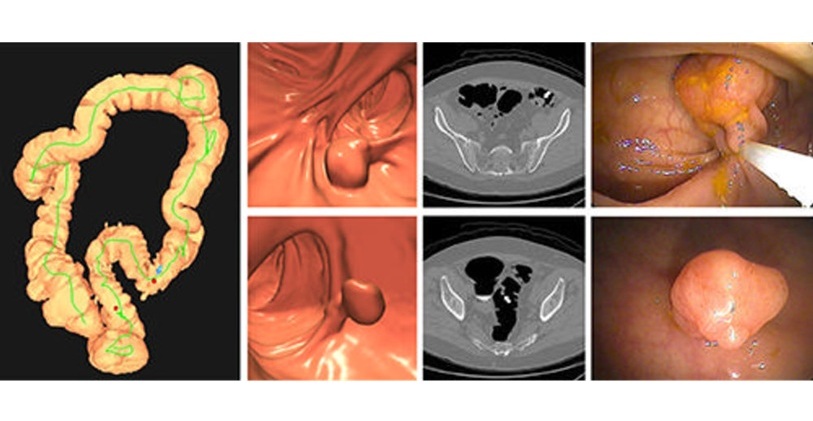
CT Colonography Beats Stool DNA Testing for Colon Cancer Screening
As colorectal cancer remains the second leading cause of cancer-related deaths worldwide, early detection through screening is vital to reduce advanced-stage treatments and associated costs.... Read more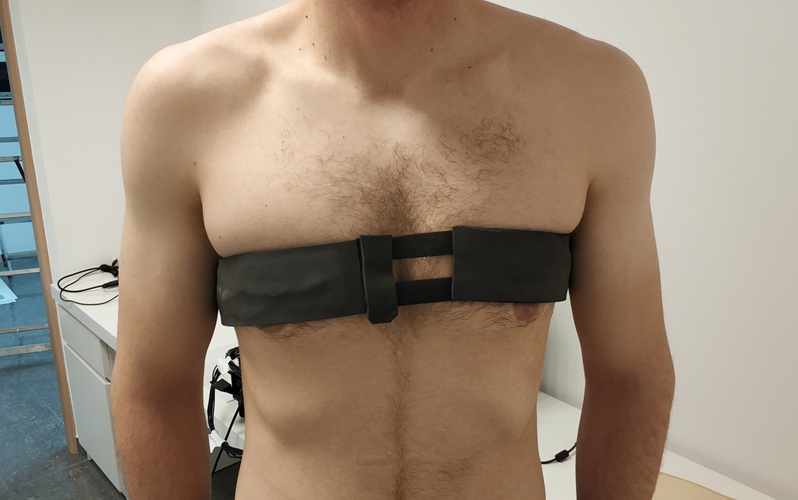
First-Of-Its-Kind Wearable Device Offers Revolutionary Alternative to CT Scans
Currently, patients with conditions such as heart failure, pneumonia, or respiratory distress often require multiple imaging procedures that are intermittent, disruptive, and involve high levels of radiation.... Read more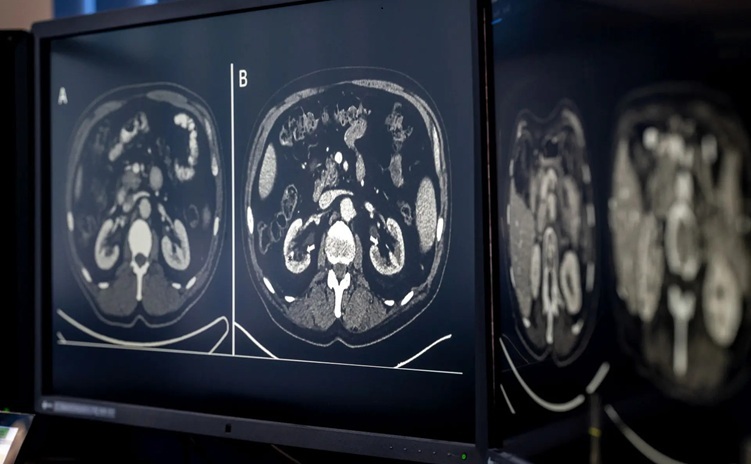
AI-Based CT Scan Analysis Predicts Early-Stage Kidney Damage Due to Cancer Treatments
Radioligand therapy, a form of targeted nuclear medicine, has recently gained attention for its potential in treating specific types of tumors. However, one of the potential side effects of this therapy... Read moreIndustry News
view channel
GE HealthCare and NVIDIA Collaboration to Reimagine Diagnostic Imaging
GE HealthCare (Chicago, IL, USA) has entered into a collaboration with NVIDIA (Santa Clara, CA, USA), expanding the existing relationship between the two companies to focus on pioneering innovation in... Read more
Patient-Specific 3D-Printed Phantoms Transform CT Imaging
New research has highlighted how anatomically precise, patient-specific 3D-printed phantoms are proving to be scalable, cost-effective, and efficient tools in the development of new CT scan algorithms... Read more
Siemens and Sectra Collaborate on Enhancing Radiology Workflows
Siemens Healthineers (Forchheim, Germany) and Sectra (Linköping, Sweden) have entered into a collaboration aimed at enhancing radiologists' diagnostic capabilities and, in turn, improving patient care... Read more












